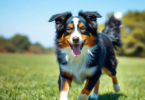An In-Depth Look at Training Your Chihuahua
Training your Chihuahua is not just a luxury; it’s an absolute necessity! These pint-sized pups have personality traits that can be as big as their hearts. Understanding their unique temperament is key to successful Chihuahua training.
Why Training Matters:
- Strong-Willed Nature: Chihuahuas are known for their feisty and stubborn behavior. Without training, these traits can lead to challenging behaviors.
- Behavioral Benefits: Proper training helps manage tendencies toward aggression and dominance, especially when they’re not well-socialized.
Advantages of Early Training:
Starting training early lays the foundation for a well-behaved companion. The benefits include:
- Establishing good habits before negative behaviors develop
- Enhancing the bond between you and your furry friend
With the right approach, you’ll transform your Chihuahua into a delightful addition to your family!
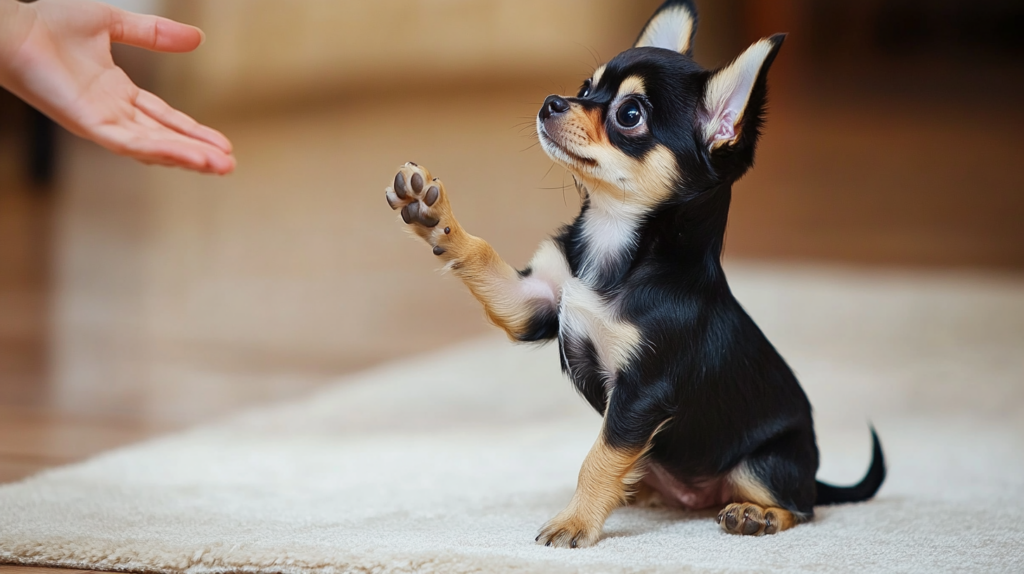
Understanding the Unique Chihuahua Learning Style
Chihuahuas have a fascinating mix of personality traits that can make training both fun and tough. Their strong-willed nature often presents unique challenges. Here are some key traits that affect how they learn:
1. Independent Thinkers
Chihuahuas often prefer to do things their own way, which can lead to stubbornness during training sessions. Establishing clear leadership helps guide them successfully.
2. Sensitive Souls
These little furballs are highly sensitive to tone and body language. Harsh corrections can backfire, making positive reinforcement crucial.
3. Small but Mighty
Their tiny size doesn’t change their big personalities. This can sometimes show up as behavior issues like aggression or dominance, especially if they feel threatened.
Common behavior issues include:
- Aggression: Often coming from fear or lack of socialization, this can be worked on by slowly introducing them to new places and experiences.
- Dominance: If they aren’t trained properly and don’t have limits set, Chihuahuas might try to take charge over other pets or even family members.
It’s important to adjust training methods to fit these specific needs. By understanding each Chihuahua’s unique personality, we can create personalized plans that promote good behaviors and strengthen the bond between pet and owner.
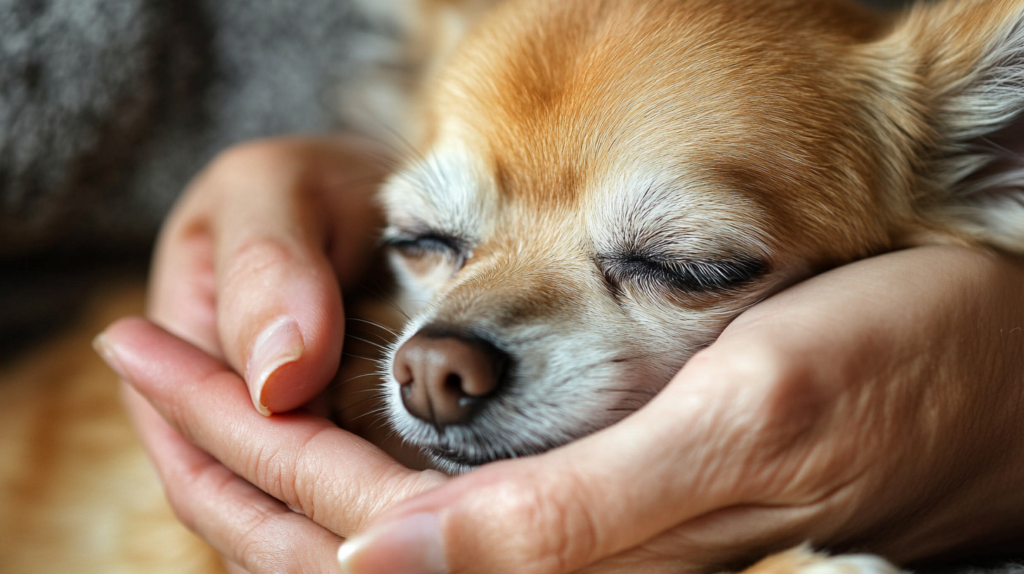
Starting Off on the Right Paw: Early Training Techniques for Chihuahuas
Starting your Chihuahua puppy’s training journey as early as 8 weeks old is essential. This age marks a critical developmental period, making it the perfect time to introduce them to puppy training. Here are some key aspects to keep in mind:
1. Building a Strong Foundation
Early training helps establish good habits and behaviors before any negative tendencies can develop.
2. Socialization Matters
Introducing your puppy to various environments, people, and other pets during this stage is crucial. Early socialization significantly reduces the likelihood of behavioral issues later on, such as aggression or anxiety.
3. Consistency is Key
Developing a routine reinforces learning. Daily sessions of short, engaging training can help your Chihuahua understand expectations. For example:
- Morning potty breaks
- Afternoon play and socialization
- Evening obedience sessions
Regularly using the same cues and commands will help solidify their understanding of behaviors you want to encourage.
4. Positive Reinforcement
Rewarding desired behaviors with treats, praise, or playtime motivates puppies to learn and repeat those behaviors.
Training a Chihuahua requires patience, but starting off on the right paw ensures a happy, well-adjusted companion. With consistent routines and effective Chihuahua training techniques, you’ll foster a bond that carries through their life. Prepare for an exciting adventure in puppy training!
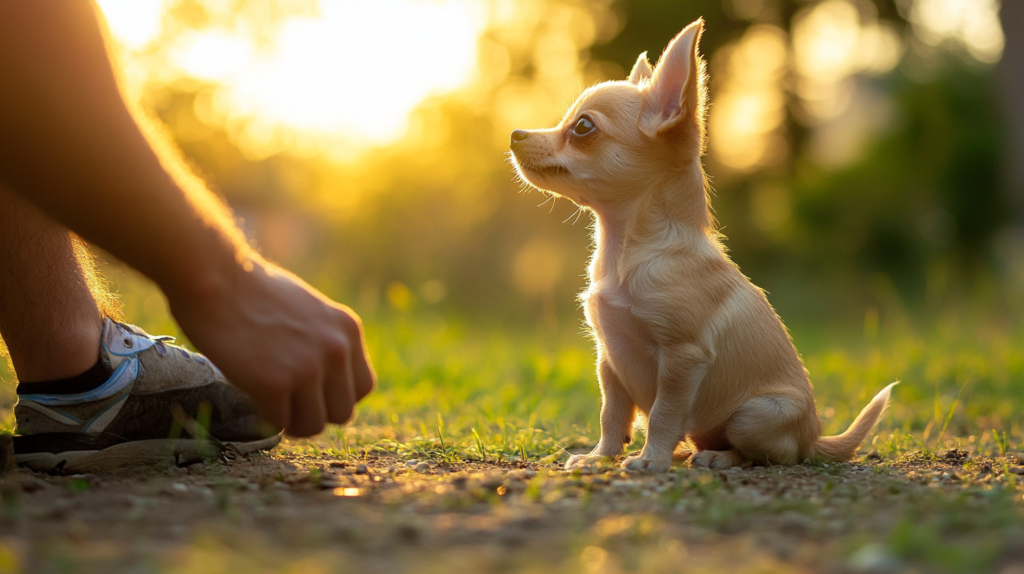
Harnessing Positive Reinforcement: Effective Training Techniques for Chihuahuas
Training a Chihuahua can be a delightful adventure, especially when you tap into their sensitive nature through positive reinforcement techniques. This approach is particularly effective, as Chihuahuas thrive on encouragement rather than correction.
Why Positive Reinforcement Works
- Sensitive Souls: Chihuahuas tend to be more sensitive compared to other breeds. Harsh training methods can cause fear or anxiety, leading to stubbornness and resistance. Positive reinforcement fosters trust and strengthens your bond.
Rewards that Work Wonders
Utilizing treats, praise, and playtime as rewards creates a fun learning environment. Here’s how:
- Treats: Small, tasty rewards can motivate your pup to follow commands. Choose healthy treats that they love!
- Praise: Verbal affirmations like “good boy!” or “well done!” make your Chihuahua feel appreciated. Pair these with a gentle pet or scratch behind the ears for extra love.
- Playtime: Incorporate their favorite games after successful training sessions. This turns learning into play and builds excitement for future training.
Consistency is Key
Applying positive reinforcement consistently ensures your Chihuahua understands which behaviors are desirable.
- Set clear rules and stick to them during training sessions.
- Use the same commands and cues to avoid confusion.
- Reward immediately after the desired behavior to create strong associations.
With this playful yet structured approach to Chihuahua training, your little friend will flourish in their learning journey!
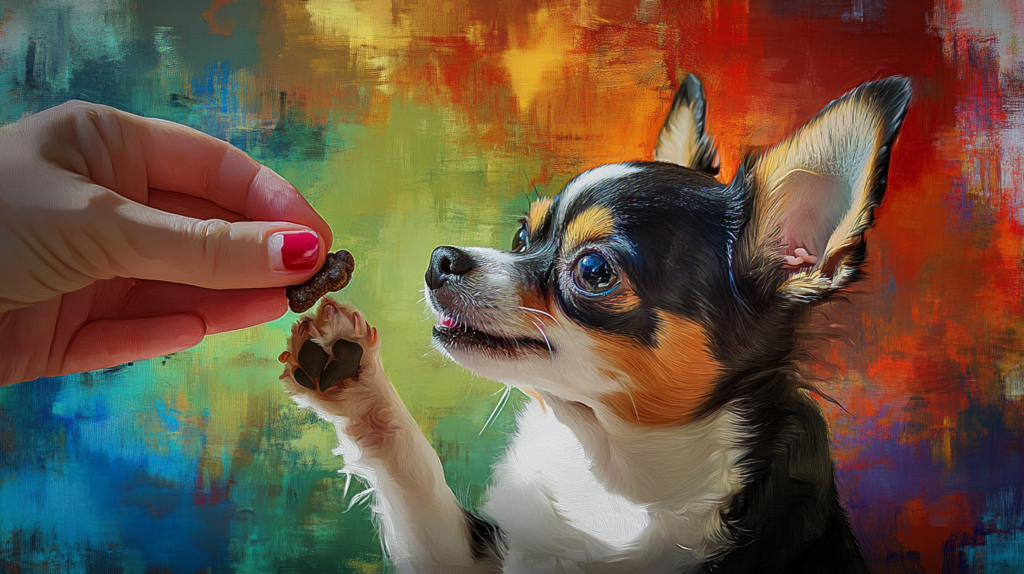
Essential Commands Every Chihuahua Should Know: A Step-by-Step Guide to Obedience Training
Teaching your Chihuahua basic commands is essential for effective communication and harmonious living. Here’s a fun and engaging way to introduce basic commands for Chihuahuas:
Key Commands to Master
1. Sit
- Hold a treat close to your Chihuahua’s nose.
- Move your hand up, allowing their head to follow the treat. This movement will cause their bottom to lower.
- Once they sit, say “sit” and give them the treat along with lots of praise.
2. Stay
- With your Chihuahua in a sitting position, show them a palm-facing hand while saying “stay.”
- Gradually take a few steps back. If they remain seated, reward them immediately.
- Practice this command at increasing distances over time.
3. Come
- Start by calling your Chihuahua’s name followed by “come” in an excited tone.
- Use treats or toys as incentives. When they reach you, shower them with affection and rewards.
Benefits of Basic Commands
- Improved Communication: Understanding commands fosters a stronger bond between you and your pup.
- Enhanced Safety: Commands like “come” can keep your Chihuahua safe in various situations.
- Reduced Behavioral Issues: Consistent training helps curb tendencies towards dominance or aggression.
Chihuahua obedience training creates a foundation where both owner and pet thrive. Engaging in these practices not only builds good habits but also paves the way for more advanced tricks and commands down the line.
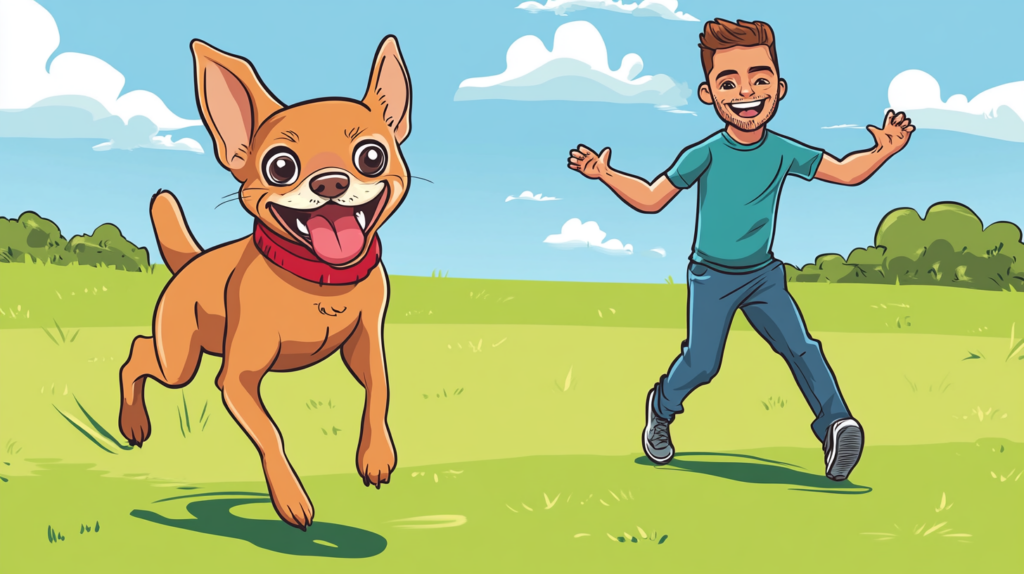
Potty Training Made Easy: A Comprehensive Approach for Chihuahuas
Potty training a Chihuahua can be easy with the right techniques. Establishing a reliable potty routine from day one is crucial, as it sets the foundation for good habits. Here’s how to make it work:
Step-by-Step Guide to Successful Crate Training
- Choose the Right Size Crate
- A crate should be just big enough for your Chihuahua to stand, turn around, and lie down comfortably. Too much space may encourage them to use one corner as a bathroom.
- Introduce the Crate Gradually
- Make the crate inviting! Place soft bedding and some toys inside. Allow your pup to explore without forcing them. Treats can help create positive associations.
- Establish a Routine
- Take your Chihuahua outside first thing in the morning, after meals, and before bedtime. Consistent timing helps them understand when it’s time to go.
- Increase Confinement Time Slowly
- Start with short periods in the crate, gradually increasing confinement time as your puppy gets more comfortable. Monitor their behavior closely; if they whine or bark, it might mean they need a bathroom break.
- Praise Successes
- When your Chihuahua goes potty outside, celebrate! Use treats and enthusiastic praise to reinforce this desired behavior.
- Be Patient
- Accidents will happen; it’s all part of the learning process. Clean up messes promptly and avoid scolding. This keeps training positive and encourages better habits.
Implementing these strategies makes potty training not only effective but also an enjoyable bonding experience with your furry friend!
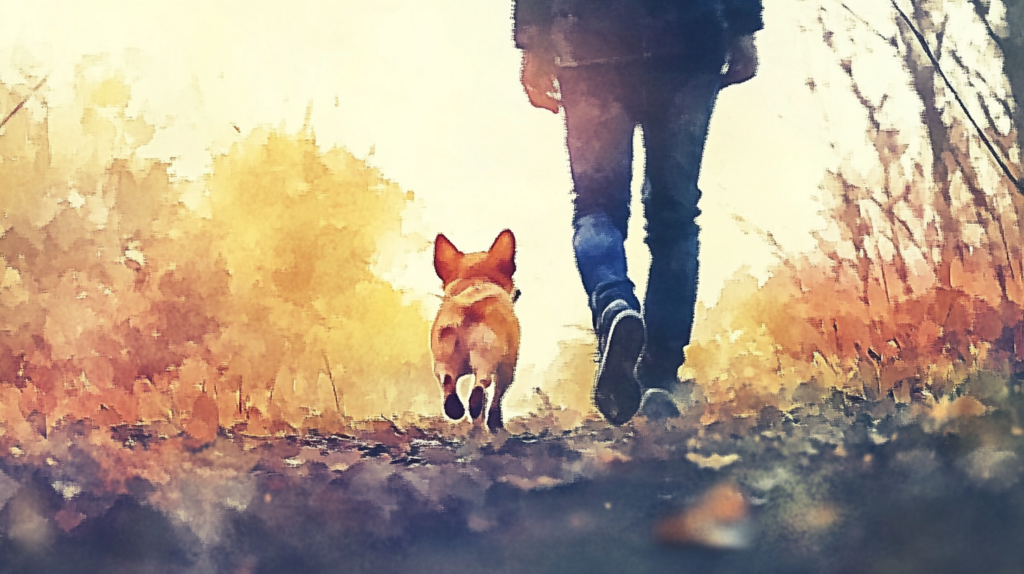
Addressing Common Behavior Issues in Chihuahuas: Tips From Experienced Owners and Trainers
Chihuahuas are known for their lively personalities, but this can come with a few Chihuahua behavior problems. One of the most notable issues is resource guarding. This behavior can show up as growling or snapping when someone gets close to their food, toys, or even their favorite human.
Strategies to Manage Resource Guarding
Effective strategies to manage resource guarding include:
- Desensitization: Gradually introduce new people or pets while your Chihuahua is eating or playing. Start at a distance and slowly decrease it over time.
- Trade-Up Method: Offer a treat in exchange for the item they’re guarding. This teaches them that sharing can lead to positive experiences.
- Training Commands: Teach commands like “leave it” or “drop it” to encourage relinquishing items without stress.
When to Seek Professional Help
Another critical aspect involves recognizing when behavioral issues may require professional assistance. Some signs that it’s time to seek help include:
- Persistent aggression towards other animals or humans
- Extreme anxiety that disrupts daily life
- Inability to curb destructive behaviors despite consistent training efforts
By understanding these common challenges, you can create a peaceful environment for both you and your Chihuahua. Remember, patience and consistency are key in addressing any behavioral problems. With the right approach, you’ll be well on your way to nurturing a well-adjusted pup!

Creating a Realistic Training Schedule That Works For You And Your Chihuahua
Crafting a Chihuahua training schedule that seamlessly integrates into your daily life can elevate your training experience. Here are some key considerations:
1. Assess Your Lifestyle
Determine how much time you can realistically dedicate to training each day. Short, focused sessions are more effective than lengthy marathons. Aim for 5-10 minutes, 2-3 times a day, to maintain enthusiasm and focus.
2. Incorporate Training into Daily Activities
Use everyday moments as opportunities for Chihuahua training. Practicing commands like “sit” or “stay” while waiting for meals or during walks can reinforce learning without feeling burdensome.
3. Consistency is Key
Stick to a routine. Chihuahuas thrive on regularity and predictability. Set specific times for training to help your pup know when to expect attention and tasks.
4. Vary the Environment
Keep things exciting by changing locations for training sessions. Conducting Chihuahua leash training in different environments will help your pup generalize commands and adapt to varied distractions.
5. Mix it Up
Rotate through various commands, tricks, or skills during each session. This keeps your Chihuahua engaged and eager to learn new things.
6. Monitor Progress
Observe how your Chihuahua responds during training sessions. If they seem distracted or disinterested, adjust the duration or nature of the activities to better suit their mood. This is particularly important if you’re dealing with an older Chihuahua who may have different learning needs.
By developing a tailored Chihuahua training schedule, you create an enjoyable environment that fosters learning while respecting both your needs and those of your furry friend.
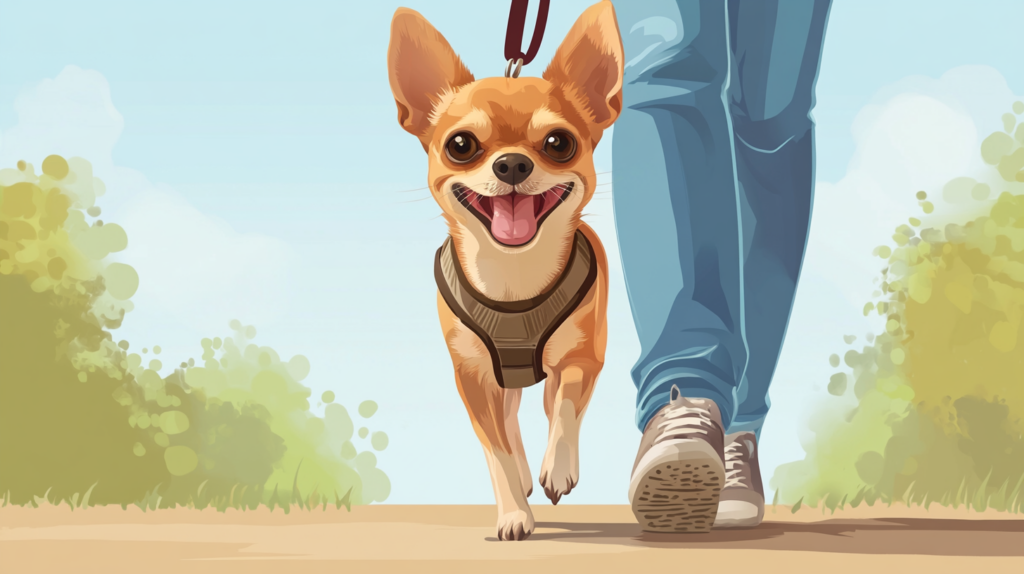
Chihuahua Training Tools and Resources
Equipping yourself with the right tools can make training your Chihuahua a breeze. Here’s a nifty list of must-have items and resources to boost your training efforts:
Essential Training Tools
- Treats: Choose small, tasty treats that are easy to carry. Look for options that are high in protein and low in calories.
- Clicker: A clicker helps mark desired behaviors instantly, making it clear to your pup what they did right.
- Harness: Opt for a comfortable harness instead of a collar. This is especially important for Chihuahuas due to their fragile necks.
- Training Pads: Useful for potty training, these pads provide a designated area for your Chihuahua to relieve themselves.
Resources for Success
- Books: “The Art of Raising a Puppy” by the Monks of New Skete offers valuable insights into dog behavior and training techniques.
- Online Courses: Websites like Udemy or Coursera feature training classes specifically designed for small breeds.
- Local Trainers: Seek out trainers who specialize in small dogs. A few sessions can offer personalized guidance.
Community Support
- Forums & Groups: Joining online communities or local clubs can provide tips and foster connections with other Chihuahua owners.
Utilizing these tools and resources can create an engaging learning experience, turning training into a fun-filled adventure for both you and your Chihuahua!
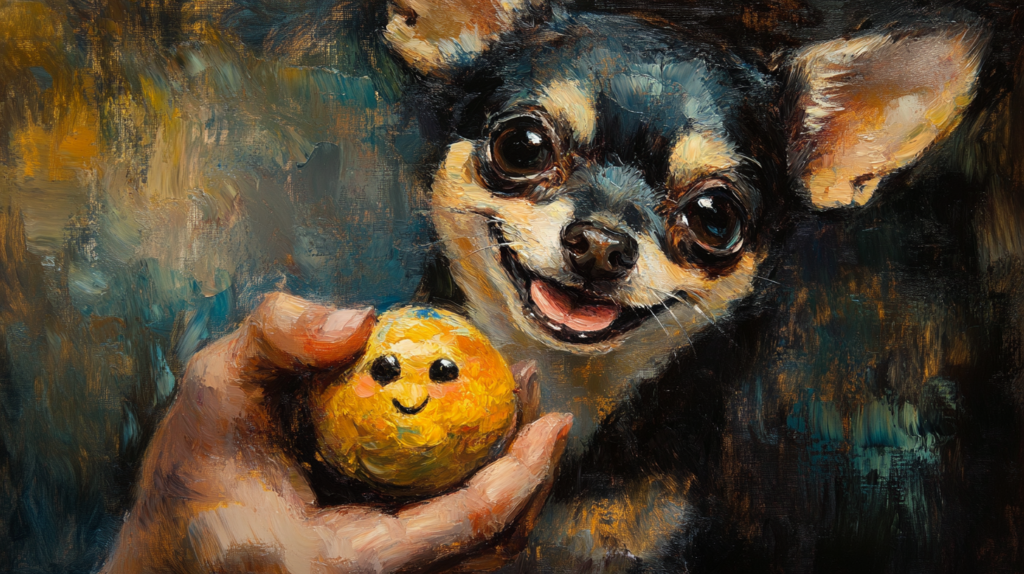
FAQs (Frequently Asked Questions)
Why is training important for Chihuahuas?
Training is essential for Chihuahuas to ensure they develop good behavior and social skills. It helps manage their strong-willed nature and can prevent common behavior issues such as aggression and dominance.
What is the ideal age to start training a Chihuahua puppy?
The ideal age to start training your Chihuahua puppy is around 8 weeks. Early training and socialization are crucial in preventing behavioral problems later on and in developing good habits through consistent routines.
What are some effective training techniques for Chihuahuas?
Positive reinforcement techniques are particularly effective with Chihuahuas due to their sensitive nature. Using treats, praise, and playtime as rewards for desired behaviors, along with consistency in applying these strategies, can lead to successful training outcomes.
What essential commands should every Chihuahua know?
Every Chihuahua should learn basic commands such as sit, stay, and come. Teaching these commands using clear verbal cues and hand signals improves overall obedience and enhances communication between you and your pet.
How can I effectively potty train my Chihuahua?
Establishing a reliable potty routine from day one is crucial. A step-by-step guide to successful crate training includes choosing the right size crate, gradually increasing confinement time, and being consistent with potty breaks.
What should I do if my Chihuahua exhibits behavior problems?
If your Chihuahua shows behavior problems such as resource guarding or aggression, it’s important to manage these issues effectively. For more serious concerns, seeking professional help from trainers or behaviorists may be necessary.






